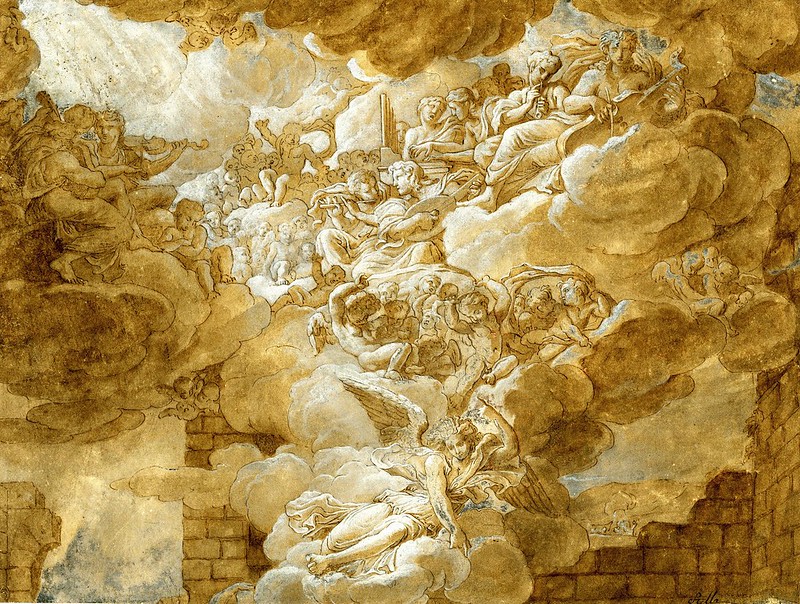Andrea Luchesi (1741-1801) - Confitebor tibi, Domine
Performers: Manuela Meneghello (soprano); Ivana Grapiglia (contralto);
Orchestra Luchesi; Agostino Granzotto (direttore)
Further info: Andrea Luchesi (1741-1801) - Piano Concerto in F
---
Italian composer. By 1757 he was in Venice where, according to Neefe, he
was trained ‘in the theatrical style’ by Gioacchino Cocchi, and ‘in the
church style’ by Padre Giuseppe Paolucci and Giuseppe Saratelli, the
maestro di cappella of S Marco. From 1765, with the support of his
patron, the music theorist Count Giordano Riccati, Lucchesi made a name
for himself in Venice as an opera composer and wrote sacred and secular
occasional works on commission. In 1771, like many of his colleagues, he
went to Germany as the director of a travelling opera company. A decree
of 26 May 1774 from the Elector Archbishop of Cologne appointed him
court Kapellmeister in Bonn, succeeding Beethoven's grandfather. In 1775
he married into the distinguished d'Anthoin family. As the opera
company had dispersed and the court theatre had been closed, Lucchesi
was now principally active as a composer of church music. Nonetheless,
he still wrote a few small-scale stage works, and in 1785 composed a
serenata for the elector on the occasion of his consecration as bishop.
However, the musical direction of the Nationaltheater in Bonn, built in
1778, was in the hands of the court organist C.G. Neefe, while
instrumental music at the court was the responsibility first of the
violinist Gaetano Mattioli and later Josef Reicha. Apart from a visit in
1783–4 to Venice, where Lucchesi produced his opera seria Ademira, and
where he probably received the title of director of the Accademia
Musical de' Tedeschi, Lucchesi remained in Bonn until the court was
dissolved after the French occupation of the Rhineland in 1794. In 1787
he was appointed Titularrat. From 1782 to 1792 the young Beethoven was a
member of the court Kapelle, first as assistant organist, then as
harpsichordist and viola player. In addition to Neefe's teaching and his
experience in Reicha's orchestra, Beethoven's musical development must
have been considerably influenced by Lucchesi, who, as Kapellmeister,
determined the repertory of sacred music performed at the court. After
the elector's flight in 1794 and in the event of the court returning,
plans for church music on a smaller scale were entrusted to Lucchesi.
However, they came to nothing, and his final years were spent in poverty
and obscurity.
In line with his career, Lucchesi's works can be divided into the operas
and instrumental works of his time in Venice and early years in Bonn,
and his sacred music for the electoral Kapelle. His secular works were
performed in many different European cities. While he had been most
famous for his organ works in Italy, according to La Borde his
symphonies were held in particularly high esteem in Germany, a notable
achievement for an Italian at this time. Leopold Mozart, writing in his
1771 diary of his Venetian travels, described Lucchesi as a maestro di
cemballo and liked to use one of his harpsichord concertos when
teaching. Although only a few of Lucchesi's works appeared in print, his
Sei sonate op.1 for harpsichord and violin (1772), was the first music
to be printed in Bonn. Lucchesi's sacred music, apart from the early
works (mostly lost), is now at the Biblioteca Estense in Modena,
together with a large part of the manuscript and printed music from the
elector's collection. Apart from many compositions for liturgical use,
his sacred works include a Passion to a Metastasio libretto for
concertante performance during Holy Week.
Various contemporary assessments of Lucchesi's style have come down to
us. Burney called him ‘a very pleasing composer’, while La Borde speaks
of ‘a particularly graceful style, concise and energetic arrangement of
the parts, and new ideas’. Neefe described him as ‘a light, agreeable
and lively composer, whose counterpoint is cleaner than that of many of
his countrymen’, adding, however, that in his sacred works he ‘does not
always confine himself to the strict style’. Lucchesi's approach to
sacred music reconciled the stile antico and the stile moderno,
combining an early form of the imitation of Palestrina with the
secularized, fashionable operatic style of the 18th century. It was
entirely in the spirit of the contemporary theory of church music that
he had learnt from his teacher Paolucci (a pupil of Padre Martini) and
from Vallotti in Padua.

Cap comentari:
Publica un comentari a l'entrada